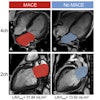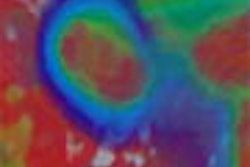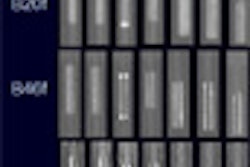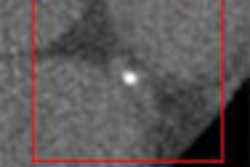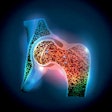Setting up a 3D/advanced processing laboratory can bring a host of clinical and financial benefits, but practices must be careful to appropriately handle billing and quality assurance issues, according to Dr. Eliot Siegel, chief of imaging of the VA Maryland Healthcare System in Baltimore.
"The way that people bill for 3D or advanced visualization studies seems to vary tremendously from one facility to another," he said. "Some facilities seem to want to bill for the majority of cases that they do, while others don't bill at all for 3D reconstructions."
Siegel discussed the economics and billing of advanced visualization studies during a talk at the PACS 2007 conference in San Antonio, sponsored by the University of Rochester School of Medicine & Dentistry in Rochester, NY.
For many imaging procedures, image review in alternative display formats is considered part of the CPT code for the imaging procedure being performed. However, separate coding for image reformatting is available for certain procedures, particularly when it entails complex 3D rendering of the original image, according to Siegel.
CPT code 76376 covers 3D rendering with interpretation and reporting of CT, MRI, ultrasound, or other tomographic modality not requiring image postprocessing on an independent workstation, while CPT code 76377 covers 3D rendering with interpretation of CT, MRI, ultrasound, or other tomographic modality requiring image postprocessing on an independent workstation. These codes should be reported along with the code or codes for the base imaging procedure or procedures.
"One has to have a policy determining whether the reconstruction is done on an independent workstation or whether it's done on a workstation as part of the modality itself," Siegel said.
Documentation from the American College of Radiology (ACR) and the American Medical Association (AMA) clarifies that both the 3D codes require concurrent physician supervision of image postprocessing, 3D manipulation of the volumetric dataset, and image rendering, he said. For 3D reconstructions not requiring image postprocessing on an independent workstation, the physician should discuss with the technologist the need for 3D imaging and supervise the technologist in creating 3D images.
The documentation also states that for studies performed on an independent workstation, the physician will supervise and/or create the 3D reconstructions, and adjust the projection to optimize visualization of anatomy or pathology. The 3D-rendering codes are intended to address complex renderings such as shaded surface rendering, volumetric rendering, maximum intensity projections (MIPs), fusion of images from other modalities, and quantitative analysis such as segmental volumes and surgical planning, Siegel said.
The ACR says it is inappropriate to report the 3D-rendering codes with certain selected procedures, since these procedures already contemplate the review of images in alternative display formats, he said. The AMA provides a list of codes in CPT 2007 that should not be reported with these 3D-rendering codes.
In addition, the ACR has indicated that 3D codes should not be used when 3D is not medically necessary, according to Siegel.
"When providing 3D-rendering services, particularly in the outpatient setting, a specific order is especially helpful to justify medical necessity," he said. "In addition, the ACR states the reformatting study should be documented in a separate report or in a separate section of the radiologist's report."
Varying reimbursement
Medicare does not currently have a national coverage policy that addresses the application of image reformatting procedures, in general. So coverage is at the discretion of local Medicare contractors who process claims on behalf of the Medicare program, Siegel said.
"This is particularly important because it means that you need to talk with your local Medicare contractors and educate them about what you're doing with regard to processing, and have them work closely with you so that they understand what the added value is and how you're using it," he said.
Some private payors may rely on Medicare reimbursement policies, while others consider alternative information, Siegel said. As a result, it's also important to consult with individual private payors regarding coverage.
For CPT code 76376, the 2007 technical reimbursement for a hospital inpatient department study is included in the diagnosis-related group (DRG), while the professional component is $10.23. Both hospital outpatient department studies and independent diagnostic testing facility (IDTF) and physician office studies have a technical component of $37.51 and a professional component of $10.23, for total reimbursement of $47.54.
For CPT code 76377, technical reimbursement for a hospital inpatient department study is also included in the DRG, while the professional component is $39.79. Exams conducted in hospital outpatient departments as well as IDTFs and physician offices have a technical component of $94.53 and a professional component of $39.79, for total reimbursement of $134.32.
"There's been a huge increase in the last three years in the use of these billing codes," Siegel said. "There's some controversy about whether an order is required, but most people would suggest that there should be a separate order from the referring physician, at least for outpatient centers. For inpatients, the radiologist can clearly state the medical necessity and the radiologist can add this, even if it wasn't specifically requested by the physician."
3D codes can't be reported with any CT angiography, MR angiography, nuclear medicine, PET, CT colonography, cardiac CT, or cardiac CT angiography study, he noted.
Quality control
One thing to be careful of in setting up 3D labs is the wide variability among various quantitative imaging tools and a lack of understanding of the limitations of technology, Siegel said. This requires meticulous quality control.
"We picked the same datasets and had the automated quantitative tools of five different vendors analyze the degree of (carotid) stenosis," he said. "What we found was tremendous variability, all the way from 45% to maybe 80%, with the same patient and the same dataset. So it's really critically important that whenever you set these labs up, and especially for quantitative analysis, that you have some internal controls to really check things."
Other pitfalls include wide variability in measurements of tumor size and the need for standardized datasets and phantoms to validate tools, Siegel said. Results should also be reported with a range rather than an exact figure.
Other 3D lab pitfalls include the potential for radiologists and clinicians to lose their skills in interacting with the datasets, and the need to ensure a high level of technologist skill similar to ultrasound, Siegel said.
By Erik L. Ridley
AuntMinnie.com staff writer
May 17, 2007
Related Reading
Radiologists may be better off taking hands-on approach to 3D workflow, April 30, 2007
PACS, IT help meet changing ultrasound workflow requirements, April 23, 2007
Cardiac CT drives adoption of 3D visualization, March 26, 2007
Survey finds routine use of 3D visualization, December 18, 2006
3D reveals what axial images can't in small-bowel CT, November 15, 2006
Copyright © 2007 AuntMinnie.com



